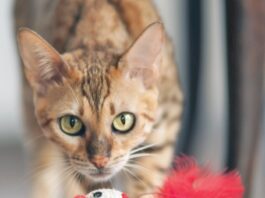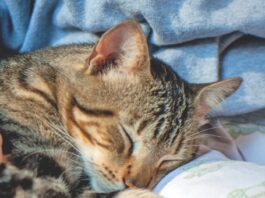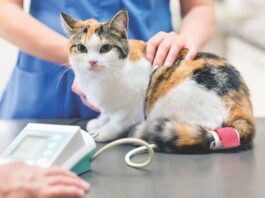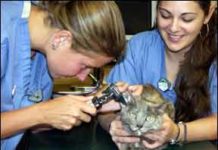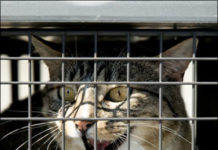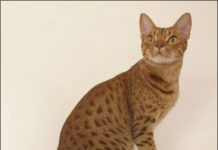Short Takes: May 2011
Urethral obstruction (UO) is a relatively common medical condition in male cats that usually requires emergency treatment (see related article on page 3 of this issue). Standard treatment - which involves medical stabilization of cardiovascular and metabolic derangements, correction of electrolyte abnormalities with IV fluid administration, and relief of the obstruction by urethral catheterization - may require a number of days in the hospital at considerable expense. The study ("A protocol for managing urethral obstruction in male cats without urethral catheterization," Journal of the American Veterinary Medical Association, 2010) involved a clinical trial involving 15 male cats with UO where standard treatment had been declined by owners due to cost issues.
Vomiting: When Is It Serious?
While youre watching your favorite television show in the family room, you hear a familiar retching sound from the kitchen. Boomer is vomiting up his dinner again. As you clean up the mess, you wonder if its just hair balls - or something more serious that requires a trip to the veterinarians office. Cats vomit for numerous reasons, ranging from benign dietary indiscretion to potentially fatal systemic diseases such as renal failure or hyperthyroidism. The experts say that cat owners should pay close attention to a cat that becomes sick to his or her stomach.
Ask Elizabeth: May 2011
Chronic renal failure is a progressive, irreversible disease that slowly leads to impaired kidney function and serious consequences. The kidneys contain nephrons which are responsible for filtering the blood, removing waste products and regulating electrolytes. In CRF, the nephrons die, and waste products begin to accumulate in the body. Electrolytes may become imbalanced in CRF, leading to problems such as hypertension, seizures, muscle weakness and heart problems.
Research Says: Stress Can Make Our Cats Sick
According to a recent Ohio State University, our pets can get sick from stress - just like us. The study found that otherwise healthy cats show signs of illness when stressed. And cats diagnosed with feline interstitial cystitis (FIC) became healthier when stress levels were reduced, the study showed. Twelve of the 32 cats in the three-year study were healthy, while 20 had FIC, a chronic pain syndrome that affects the cats bladder. According to researchers, lower urinary tract diseases occur in about 1.5 percent of house cats, and many pet owners cant tolerate the mess that accompanies it. As a result, millions of sick cats are put down or relinquished to shelters every year.
Diagnosis: Otitis Externa
Among all acquired feline ear disorders, the most common by far is otitis externa, an infection of the outer ear canal that, if untreated, can progress to the inner ear, damage the ear drum and seriously compromise an animals hearing as well as its sense of balance. The most common cause of this unpleasant condition and its potentially deafening consequences is an assault on the ear by an outside invader, the ear mite. In some cases, however, the culprit is an organism that normally resides harmlessly within a cats ear a one-celled fungus, or yeast, known as Malessezia.
Antifreeze Dangers: Deadly Serious
As you cope with the frigid temperatures that come with winter, you may make it a habit of adding antifreeze to the radiator of your automobile. This substance-a bright green, syrupy chemical called ethylene glycol-serves to lower the freezing point of water and will certainly help to keep your car running smoothly throughout the colder months. Keep in mind, however, that ethylene glycol, if ingested by your cat, can prove deadly within a matter of days if the animal does not undergo prompt and expert veterinary treatment to get it out of its system.
Short Takes: January 2011
Diabetes mellitus (DM) is one of the most common endocrine diseases found in cats, and insulin therapy has become the most effective means to achieve blood glucose control. Clinical remission is not an uncommon finding in cats with well-controlled diabetes, though few studies have explored predictors of remission. In this study ("Predictors of clinical remission in cats with diabetes mellitus," Journal of Veterinary Internal Medicine, 2010), data was retrieved from the medical records of 90 cats with newly-diagnosed diabetes. The data collected included history, signalment, physical examination findings, hematology, biochemical profile and the occurrence and duration of remission. Remission was defined as normoglycemia without insulin longer than four consecutive weeks.
A Guide to Anesthesia for Cats
Any surgical procedure that will be painful to your cat will require that the animals pain perception be dulled, if not totally blocked, by an anesthetic of some sort. Understandably, some cat owners find the notion that a pet will be placed under anesthesia a frightening prospect. "Theres always a risk," acknowledges James Flanders, DVM, an associate professor of surgery at Cornell Universitys College of Veterinary Medicine. "But if the cat is known to be in generally good health and if the anesthetic drugs are used properly, the chance that something will go wrong is very slim."
Feline Intestinal Disorders
Intestinal disorders rank among those most frequently treated by veterinarians at local clinics and large referral hospitals throughout the U.S. According to Melanie Craven, BVM, an internist and researcher in gastroenterology at Cornell Universitys College of Veterinary Medicine, vomiting, diarrhea and dramatic weight loss are the most common signs of feline intestinal disease in cats. However, she notes, subtler signs such as lethargy and appetite fluctuations can also suggest the presence of an intestinal disorder. Some of these disorders may be secondary to conditions originating in other organs, such as the thyroid gland, liver, kidneys and pancreas. But according to Dr. Craven, the problems usually originate in either the upper or lower segments of a cats intestines.
Ask Elizabeth: January 2011
Our dog came home from the kennel last week with a bad case of kennel cough. Hes on antibiotics and hes gradually getting better. However, now our two cats are also coughing. Is it possible that they have kennel cough, even though they did not go to the kennel and they are cats? I never heard of cats getting kennel cough. If they have kennel cough, should they be treated with antibiotics, as well?
Vaccinations: The Benefits and Risks
During the past half-century, no fewer than 10 vaccines have been developed that, according to their manufacturers, can protect your cat against a wide variety of lethal feline diseases. In general, these claims of efficacy have been justified. According to Fred Scott, DVM, PhD, professor emeritus of virology at Cornell Universitys College of Veterinary Medicine and the founding director of the Cornell Feline Health Center, the vaccines have been responsible for "a tremendous improvement in feline health." A prime example is the vaccine created to protect against the feline panleukopenia virus (FPV). "Prior to the late 1960s and early 1970s," says Dr. Scott, "half of all cats that passed through a shelter developed panleukopenia within a few days - and as many as 90 percent of them died from it.
Ask Elizabeth: December 2010
When Dr. Lucas came into the room I was too embarrassed to admit that Id been peeking at Lilys record so instead of asking her, Im asking you, Elizabeth: What does that description mean? In particular Im curious about the mackerel tabby part; Ive always called Lily a tiger cat, which I think is another name for tabby … but mackerel sounds fishy!


